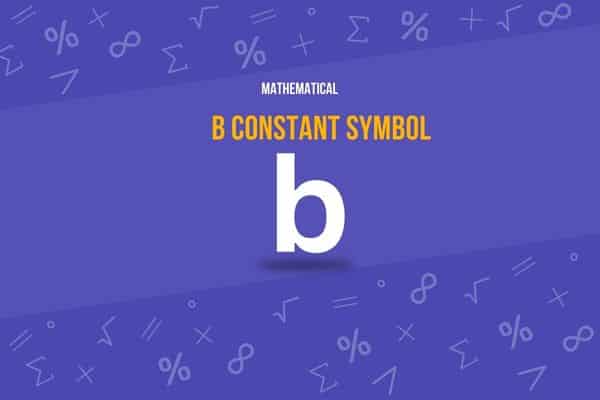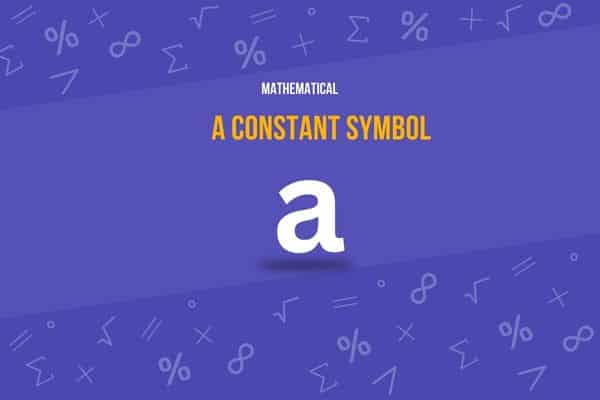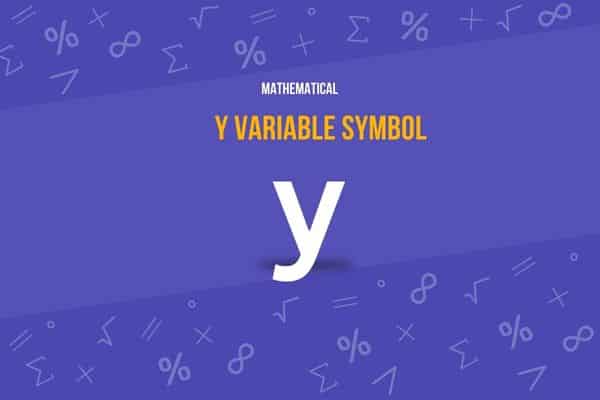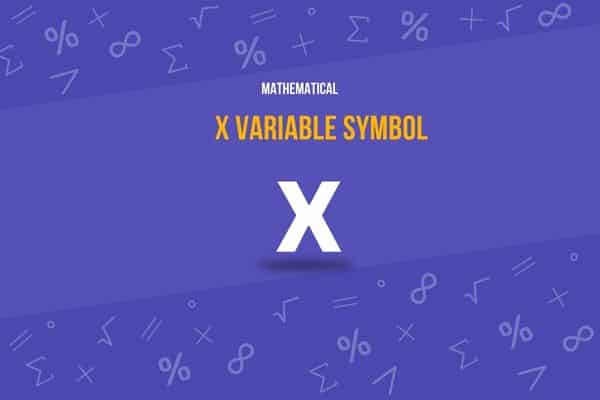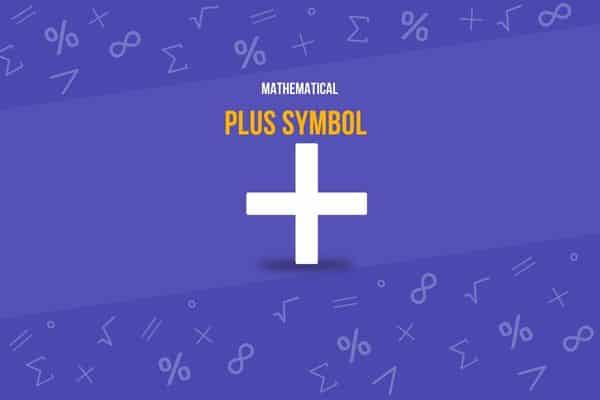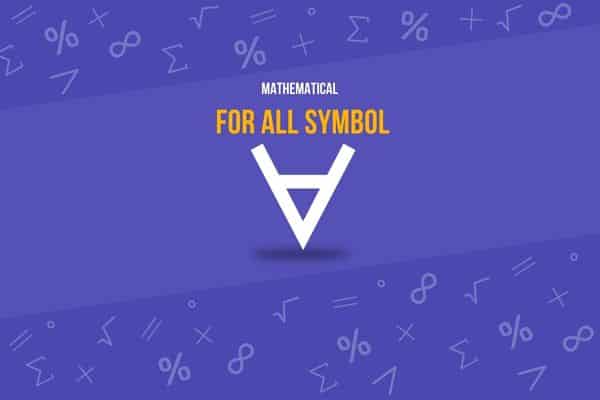What is the Perpendicular Symbol?
Have you ever been puzzled by the little upside-down “T” in mathematical discussions or equations?
This commonly seen mathematical symbol, which looks so simple, is significant in the mathematical world. It’s the perpendicular symbol, and you’ve come across the right place to learn more about it!
From geometry to linear algebra, the perpendicular symbol establishes important relationships between lines and planes.
Often taken for granted, it’s more than just a notation; it’s a silent conductor orchestrating the harmony of angles in the symphony of mathematics.
Let’s check it out!
Symbols Fast Facts
Fast Facts
⊥
Perpendicular Symbol
Here’s a detailed table providing information about the Perpendicular symbol (⊥):
| Attribute | Detail |
|---|---|
| Symbol Name | Perpendicular |
| Unicode | U+22A5 |
| Image | ⊥ |
| Brief Description | Used to denote perpendicularity between two lines, planes, or surfaces in geometry. |
| Unicode Version and Date of this Version | Unicode 1.1, released in June 1993 |
| Unicode Block Name | Mathematical Operators |
| Plane | Basic Multilingual Plane |
| Script | Common |
| Category | Symbol, Math |
| Bidirectional Class | Other Neutrals (ON) |
| Combining Class | 0 |
| Character is Mirrored | No |
| HTML Entity | ⊥ or ⊥ or ∩ |
| CSS | \22A5 |
| UTF-8 Encoding | E2 8A A5 |
| UTF-16 Encoding | 22 A5 |
| UTF-32 Encoding | 00 00 22 A5 |
Here’s What You Will Find
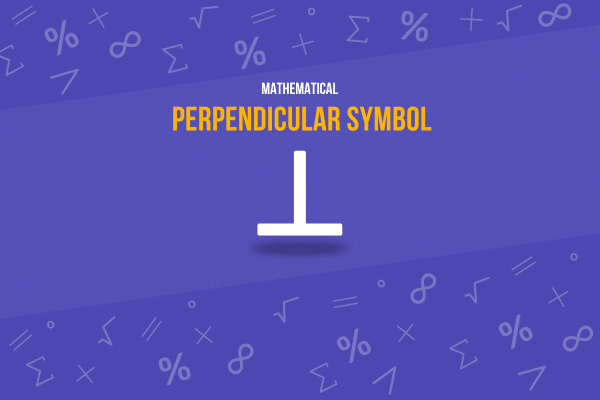
Perpendicular Symbol
The perpendicular symbol, often represented as ‘⊥, ‘is a mathematical symbol used to denote the relationship between two lines, planes, or surfaces intersecting at a right angle, also known as 90 degrees.
This symbol is often used in geometry, trigonometry, and other areas of mathematics to show that one line or plane is at a right angle to another.
The concept of perpendicularity is vital in understanding various geometric principles and theorems, as it helps define shapes, positions, and orientations in space.
So, when you see this symbol, it’s your clue that a 90-degree relationship is in play!
Other Names
The perpendicular symbol ‘⊥’ is universally recognized in mathematical notation but is also referred to by various names depending on the context.
In mathematical logic, it is commonly known as the ‘up tack’ or ‘orthogonal symbol’. The term ‘up tack’ comes from its typographical appearance, which resembles a tack or nail.
On the other hand, ‘orthogonal’ is a term that originates from Greek, where ‘ortho’ means ‘right’ and ‘gonia’ means ‘angle. ‘ Thus, the symbol effectively embodies the concept of right angles.
Regardless of the name used, this symbol’s meaning remains constant—it indicates a 90-degree angle or perpendicularity between two elements.
Perpendicular Symbol Meaning
The perpendicular symbol (⊥) is a mathematical symbol used to denote perpendicularity in geometry. It indicates that two lines, planes, or surfaces intersect at a right angle (90 degrees). Commonly used in mathematical diagrams, proofs, and theorems, this symbol helps clarify the geometric relationships between different elements, ensuring precise communication in written and visual representations of mathematical concepts. The symbol is essential for conveying the idea of orthogonality in spaces of any dimension.
The perpendicular symbol ‘⊥’ carries a profound meaning, transcending its simple typographical representation.
At its core, the symbol represents the concept of perpendicularity, which means the relationship between two lines, planes, or surfaces intersecting at a right angle, precisely 90 degrees.
This notion of a perfect 90-degree angle embodies a fundamental aspect of geometry, offering a key framework for understanding shapes, orientations, and spatial relationships. The perpendicular symbol serves as a concise notation, a visual shorthand communicating this essential concept in mathematical language.
It acts as a silent conductor, harmonizing angles and defining the structural integrity of geometric constructions.
Beyond mathematics, the perpendicular symbol finds application in diverse disciplines. It symbolizes orthogonal vectors in linear algebra and represents contradictions in formal logic.
The ‘⊥’ symbol encapsulates the profound idea of perpendicularity, precision, balance, and the elegant interplay of lines in the tapestry of knowledge.
Perpendicular Symbol Unicode
Unicode is a computing industry standard designed to maintain consistency in the representation and manipulation of text in the world’s writing systems.
Developed by the Unicode Consortium, it includes a set of code charts for visual reference, an encoding methodology, and a set of standard character properties.
Unicode provides a unique number for every character or symbol, no matter the platform, program, or language, enabling computers to use and recognize any text.
The Unicode character for the perpendicular symbol ‘⊥’ is U+22A5. This specific identification code allows the perpendicular symbol to be used universally across different computing platforms, applications, and digital interfaces.
A mathematical theorem online, ‘U+22A5’, is the unique Unicode representation that correctly displays the perpendicular symbol.
Perpendicular Symbol Uses
In mathematics, the perpendicular symbol ‘⊥’ is widely used to denote the concept of perpendicularity, stating that two lines, planes, or surfaces intersect at a right angle (90 degrees).
It’s a fundamental element in geometry that defines shapes, angles, and space.
Various mathematical and engineering disciplines denote orthogonal relationships using the perpendicular symbol (⊥). Here are some of the key uses of the perpendicular symbol:
- Geometry: Indicates that two lines or planes intersect at a right angle, a fundamental concept in Euclidean geometry.
- Engineering Drawings: Used to specify that certain features or surfaces on a part must be machined at right angles to a reference plane, crucial for ensuring proper assembly and function.
- Mathematical Proofs: Employs the symbol to assert the perpendicularity of elements as part of geometric proofs, enhancing the clarity and precision of the arguments.
- Coordinate Systems: Diagrams involving coordinate systems show that the axes are orthogonal, a standard assumption in most mathematical contexts.
- Computer Graphics and Design: Utilized to define the angles between vectors, planes, and normals in three-dimensional modeling and rendering, ensuring correct object representations and interactions.
- Statistics and Data Analysis: In multivariate statistics, the symbol can represent orthogonal regression lines or principal components designed to be perpendicular to each other in high-dimensional space.
These applications demonstrate how the perpendicular symbol is vital for expressing precise orthogonal relationships across various fields, from theoretical mathematics to practical engineering and design.
Additionally, the symbol is used in linear algebra to describe orthogonal vectors, a crucial concept in understanding vector spaces and transformations.
The story is a little different in the case of formal logic, which indicates a contradiction or an absurdity in a logical argument.
This use is derived from its geometrical interpretation—since perpendicular lines inherently ‘disagree’ on their direction, the symbol aptly represents conflicting logical statements.
Therefore, when you see ‘⊥’ in a logical proof, it typically signifies that the preceding statements have led to a contradiction, often suggesting that an initial assumption was false.
Hence, the versatile ‘⊥’ finds significant application in elucidating mathematical relationships and establishing the consistency of logical arguments.
Perpendicular Symbol Examples
The perpendicular symbol (⊥) is a fundamental mathematical symbol widely used to indicate orthogonal relationships in various contexts. Here are some practical examples demonstrating its use:
- Geometry: Used to show that two lines are perpendicular, such as stating that line AB is perpendicular to line CD, written as ( AB \perp CD ).
- Construction and Architecture: In building plans or architectural drawings, the symbol ensures that walls or elements are erected at right angles to each other, which is critical for structural integrity and aesthetic symmetry.
- Theorems and Proofs: These are commonly seen in geometric proofs, such as demonstrating that the altitude of a triangle is perpendicular to its base, which is crucial for deriving properties related to area and congruence.
- 3D Modeling: In computer graphics, the symbol specifies that two planes or vectors are perpendicular, which helps create accurate 3D models and animations where precise angle relationships are necessary.
- Trigonometry: In trigonometric calculations, the perpendicular relationships between sides of right triangles are fundamental, often represented using the symbol to clarify solutions or proofs.
- Circuit Design: In electrical engineering, diagrams might use the symbol to indicate that certain circuit components, like capacitors or inductors, are mounted perpendicular to each other to minimize interference.
These examples illustrate how the perpendicular symbol is instrumental in communicating exact perpendicular relationships across a wide range of scientific, technological, and engineering disciplines.
The use of the perpendicular symbol ‘⊥’ also can be demonstrated with a simple geometric example.
Suppose we have two lines, line AB and line CD. If these lines intersect at a right angle (90 degrees), we can denote this relationship using the perpendicular symbol as follows: AB ⊥ CD.
This notation tells us that line AB is perpendicular to line CD. This implies that if you were to measure the angle formed where the lines AB and CD intersect, you would find it to be exactly 90 degrees.
Why is the Perpendicular Symbol Important?
The perpendicular symbol ‘⊥’ holds considerable significance in mathematics, science, and engineering because it succinctly expresses the fundamental concept of perpendicularity or right-angle relationships.
Accurately identifying these relationships enables the precise definition and analysis of geometrical shapes, vectors, planes, and more.
Its ability to denote orthogonal vectors is crucial in linear algebra, where such vectors play a significant role in transformations and matrix computations. Moreover, in formal logic, its use to represent contradictions is vital in establishing the validity or inconsistency of arguments.
Without the perpendicular symbol, expressing these relationships would require lengthier descriptions, making mathematical notation and logical proofs more complicated and less efficient.
Therefore, the ‘⊥’ symbol is not just a convenience—it’s a key tool that enhances clarity, precision, and efficiency in various fields.
Perpendicular Symbol History
The perpendicular symbol (⊥) has a significant history in mathematics and geometry. It represents the concept of perpendicularity, which has been fundamental to architectural and geometric reasoning since ancient times.
Origins and Development
- Ancient Foundations: The concept of perpendicularity dates back to ancient civilizations like the Egyptians and Greeks, who recognized and used right angles in construction and astronomy. However, the specific symbol for perpendicularity (⊥) did not appear until much later.
- Medieval and Renaissance Geometry: During the medieval period, scholars in the Islamic world and later in Renaissance Europe developed more rigorous approaches to geometry. Although they frequently discussed perpendicular relationships, the modern notation was yet standardized.
- Symbol Adoption: The symbol (⊥) began appearing in mathematical texts during the 17th and 18th centuries as mathematicians sought more precise and standardized notations for geometric concepts. Its simple, visual nature made it effective for denoting the specific geometric relationship of perpendicularity.
Standardization in Modern Mathematics
- 19th Century: By the 19th century, as mathematical education formalized in schools and universities, the perpendicular symbol became common in textbooks and academic papers, helping to unify mathematical notation internationally.
- 20th Century to Present: Adopting the perpendicular symbol in international standards like Unicode further solidified its role in modern digital communication. It became integral in printed materials and digital formats used in software and online content.
Cultural and Educational Impact
- Global Recognition: The perpendicular symbol is now universally recognized in mathematics education worldwide, helping students from various backgrounds learn about geometry and spatial relationships.
- Professional Applications: Beyond academia, the symbol is used in professional fields such as engineering, architecture, and computer graphics, where precise geometric relationships are crucial.
The history of the perpendicular symbol illustrates its growth from fundamental geometric practices to a standardized symbol in global mathematical notation, emphasizing its importance in historical and modern contexts.
The history of the perpendicular symbol ‘⊥’ isn’t precisely documented, largely because it evolved as part of the broader development of mathematical notation over centuries.
The concept of perpendicularity has been fundamental to geometry since ancient times, with the ancient Greeks providing some of the earliest rigorous explorations of the concept.
However, the specific symbol we use today to denote perpendicularity likely did not emerge until more recently, as mathematical notation became more standardized.
Perpendicular Symbol Origin
The origin of the perpendicular symbol (⊥) is rooted in the development of mathematical notation that specifically addresses geometric relationships. The symbol itself was designed to visually represent the concept of perpendicularity — two lines meeting at a right angle.
Historical Context
- Ancient Geometry: Ancient civilizations such as the Greeks and Egyptians recognized and utilized the concept of perpendicularity, especially in construction and land surveying. Despite their understanding and application of right angles, these early cultures did not have a specific symbol for perpendicularity.
- Medieval Advances: During the medieval period, especially within Islamic mathematics, scholars like Al-Khwarizmi and Thabit ibn Qurra made significant contributions to geometry. However, like their predecessors, they did not use a specific symbol for perpendicular lines.
- Symbol Introduction: The introduction of the perpendicular symbol (⊥) can be traced to the early modern period in Europe, when mathematicians began seeking more precise notations for conveying mathematical relationships clearly. The symbol was likely introduced or popularized in mathematical texts around the 16th or 17th century as part of a broader movement towards standardized mathematical notation.
Evolution and Adoption
- Standardization in Texts: The perpendicular symbol became more widespread with the advent of printing and the increasing circulation of mathematical texts. By visually representing the concept of perpendicularity, the symbol helped clarify complex geometric propositions and proofs.
- Mathematical Notation: By the 19th century, as mathematical education became more formalized and standardized, the symbol was universally adopted in textbooks and academic discussions, ensuring consistent communication of geometric principles.
The perpendicular symbol (⊥) thus represents a convergence of historical geometric knowledge and the evolution of mathematical notation, culminating in a universally recognized symbol that efficiently conveys one of the fundamental geometric relationships.
The current widely accepted use of ‘⊥’ to represent perpendicularity is a convention that has become established over time. Its design is thought to be a simplified representation of one line standing at a right angle to another.
While the symbol’s origins may be somewhat obscure, the ‘⊥’ symbol today is universally recognized and understood across various mathematical and logical contexts, reflecting the evolution and standardization of mathematical language.
Evolution of the Perpendicular Symbol
While there is no concrete historical documentation about the evolution of the perpendicular symbol specifically, we know that mathematical symbols, in general, have undergone significant transformation and standardization over time.
The use of ‘⊥’ to denote perpendicularity is a relatively modern convention. Previously, the concept of perpendicularity was expressed through words or perhaps through diagrams in geometrical contexts.
Since its inception, the symbol has largely remained visually consistent as an upside-down ‘T’, serving as a simple yet effective way to illustrate the concept of a right angle.
As mathematics has advanced and become more formalized, the use of the perpendicular symbol has expanded to fields like linear algebra and formal logic, broadening its application and significance.
However, the fundamental meaning of the symbol, which denotes perpendicularity or orthogonality, has remained consistent throughout its use.
Perpendicular Symbol In Everyday Life
Reflecting on the perpendicular symbol ‘⊥’ evokes a sense of appreciation for the elegance and versatility of mathematical concepts. It reminds us of the importance of precision and right angles beyond abstract equations and theorems in our daily lives.
Incorporating the principles represented by the perpendicular symbol into our routines can enhance our sense of organization and balance. For instance, arranging objects or furniture at right angles can create a visually pleasing and harmonious environment.
Embracing the idea of perpendicularity in problem-solving can help us approach challenges from different perspectives, consider orthogonal possibilities, and find creative solutions.
Additionally, practicing mental perpendicularity can involve developing logical reasoning skills and critical thinking, striving to identify contradictions or inconsistencies in our thoughts or arguments.
By infusing these principles into our daily routines, we can cultivate a mindful appreciation for our world’s inherent structure and interplay of perpendicularity.
Last Thoughts
The Perpendicular symbol is vital in understanding the world around us. From the fundamental world of geometry to the philosophical complexities of formal logic, the perpendicular symbol helps convey important ideas about how our universe works.
If you are interested in merchandise that showcases your newfound interest in the perpendicular symbol, consider visiting our online store. There, you can find mugs, shirts, and other items that proudly display our love for the Perpendicular symbol and many other symbols.
Before You Go
If you liked our article about the fascinating story of the Perpendicular symbol, consider continuing your journey. There are hundreds of other symbols to discover; you’d be surprised what you can learn from a few symbols.

